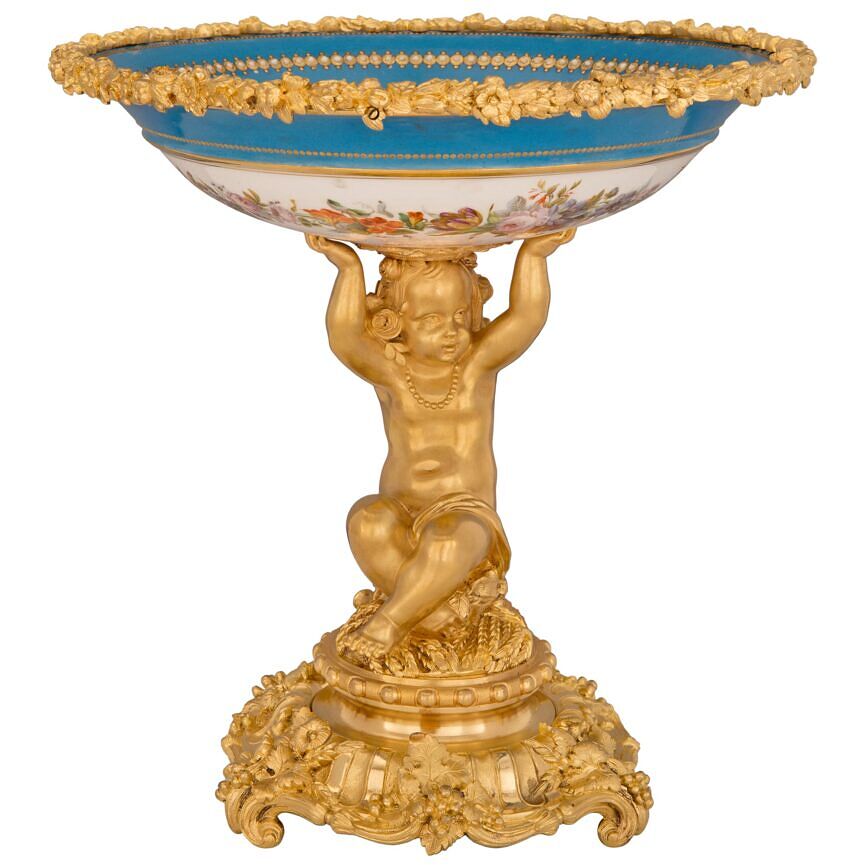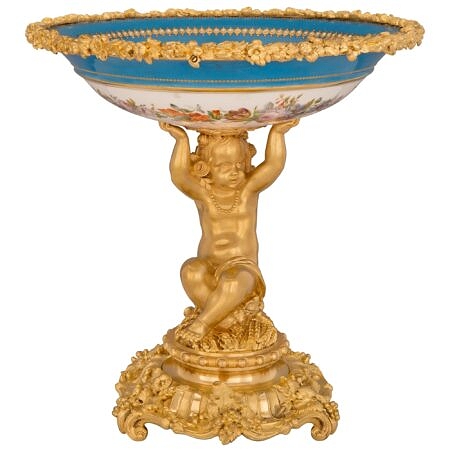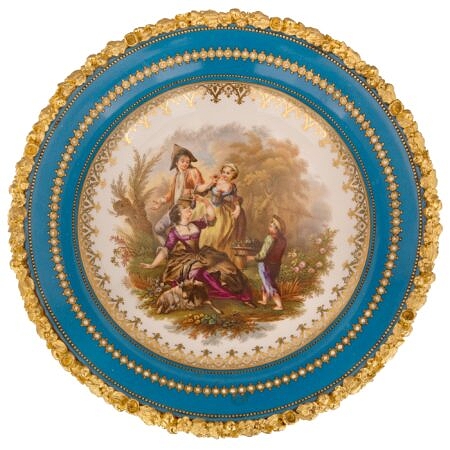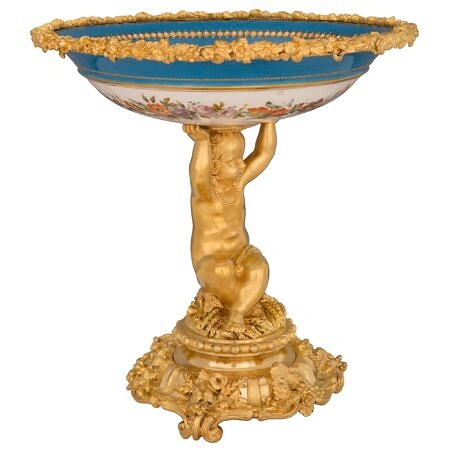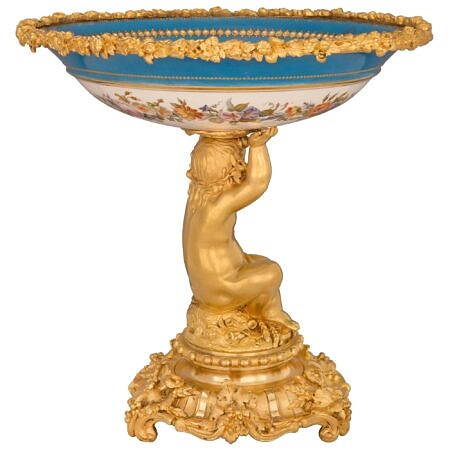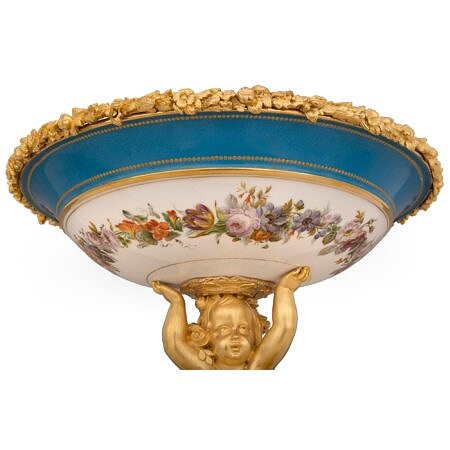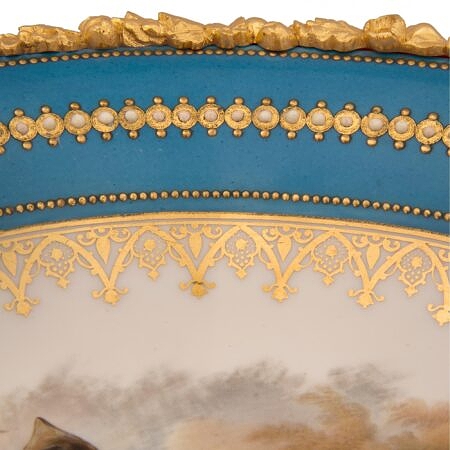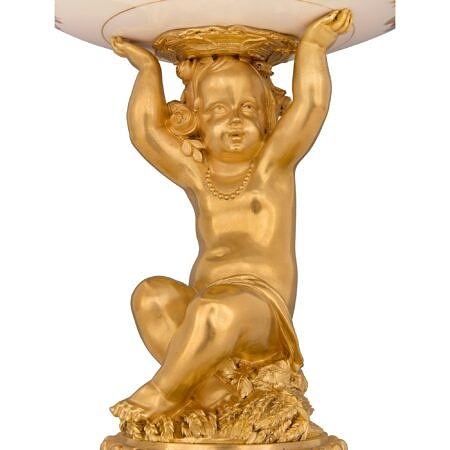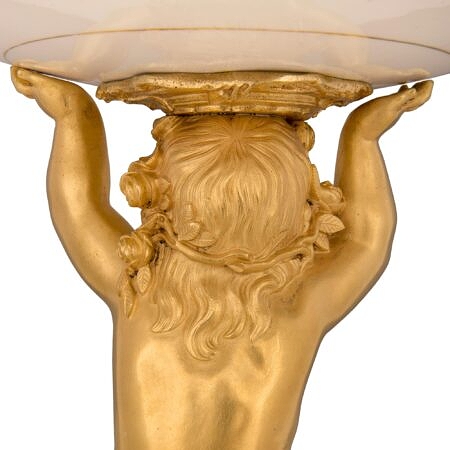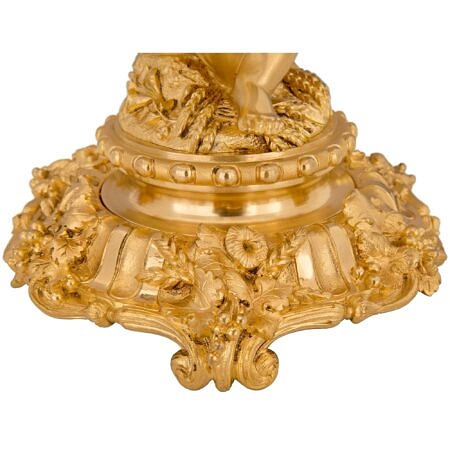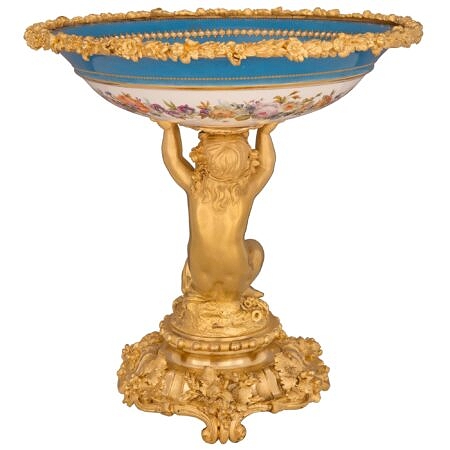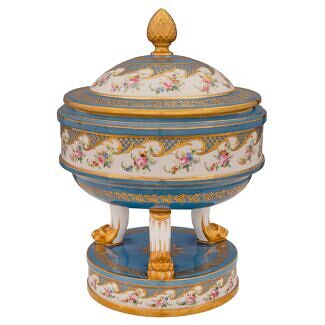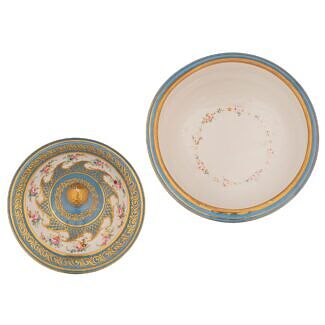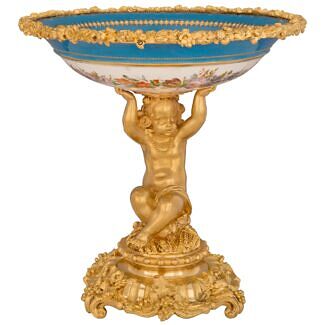A French 19th century Louis XVI st. Belle Époque period ormolu and Sèvres porcelain centerpiece
List: $11,800.00
A beautiful and high quality French 19th century Louis XVI st. Belle Époque period ormolu and Sèvres porcelain centerpiece. The centerpiece is raised by a most decorative ormolu scrolled foliate base with charming richly chased grape leaves, grape clusters and... — Read More
A beautiful and high quality French 19th century Louis XVI st. Belle Époque period ormolu and Sèvres porcelain centerpiece. The centerpiece is raised by a most decorative ormolu scrolled foliate base with charming richly chased grape leaves, grape clusters and finely detailed flowers in a stunning satin and burnished finish. Above a wrap around beaded band is a charming young girl seated with her legs crossed on a wonderfully executed ground design with lovely wheat sprigs. She is holding up the bowl with her hands above her head while draped in a fine flowing fabric. She is wearing a beaded necklace and has exceptional flowers in her hair tied with a vine. The striking Sèvres porcelain bowl above displays finely detailed hand painted flowers with beautiful vivid colors on the outside and a wonderfully executed central reserve. The most attractive hand painted reserve depicts beautiful maidens dressed in superb flowing dresses eating grapes with a goat at their side and young boys carrying baskets of flowers in the lovely French countryside. The reserve is framed within a gold tooled foliate and lattice border, with a beaded jeweled and gilt band with a richly chased wrap around floral ormolu band at the border. All original gilt throughout. — Read Less
- Item # 11606
-
H: 12.25 in L: 11.75 in D: 11.75 in
H: 31 cm L: 30 cm D: 30 cm
- France
- 19th Century
- Ormolu, Porcelain
- Belle Époque Period Read More, Louis XVI st. Read More
- Sèvres Read More
It was founded through the support of King Louis XV of France and at the initiative of Madame Pompadour to be located near her Château.
Due to Sèvres’ reputation for excellence and prestige, it has always attracted some of the best artists throughout history; François Boucher, Albert-Ernest Carrier-Belleuse, Étienne Maurice Falconet, Alexandre Fragonard and August Rodin, just to name a few. Many of these artworks can be seen at the Louvre Museum and the Musée National de Céramique in France.
Initially, Sèvres created a soft paste porcelain know as Biscuit de Sèvres. In 1768 the Bordeaux chemist Villaris and Jean Baptiste Darnet discovered deposits of Kaolin on French soil. In 1771 the Royal Academy sent a report on the creation of hard paste porcelain at which time Sèvres began manufacturing hard paste porcelain.
Louis-Simon Boizot (1743–1809) was a French sculptor renowned for creating Biscuit de Sèvres models, and was the director at Sèvres from 1774-1800, followed by Alexandre Brogniart(1800-1847) and Henri Victor Regnault in 1854.
Related products
-
# 5384 - H: 15" L: 11" D: 11"


